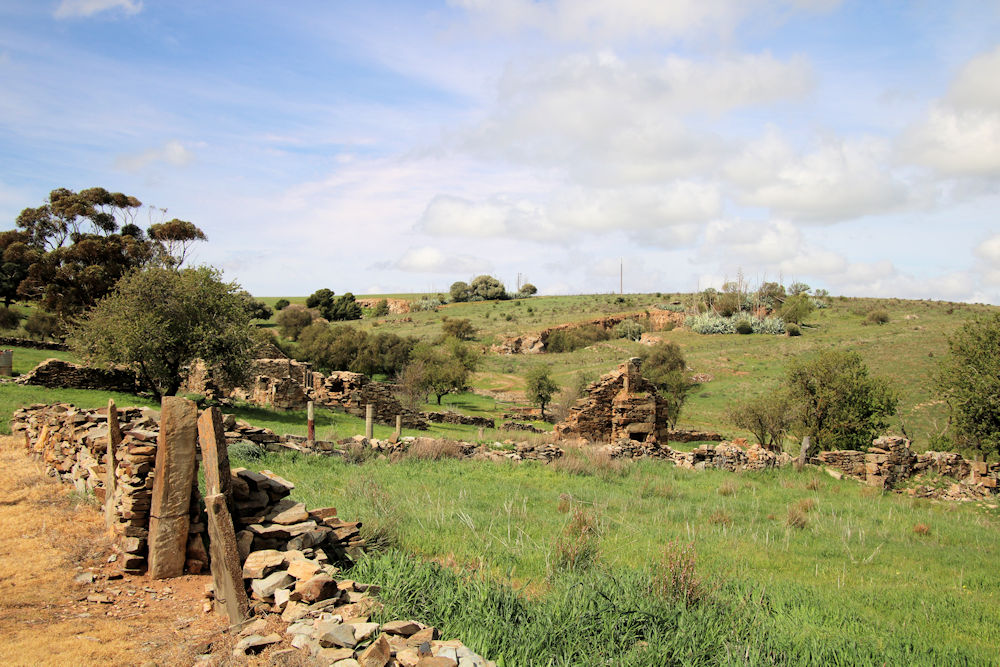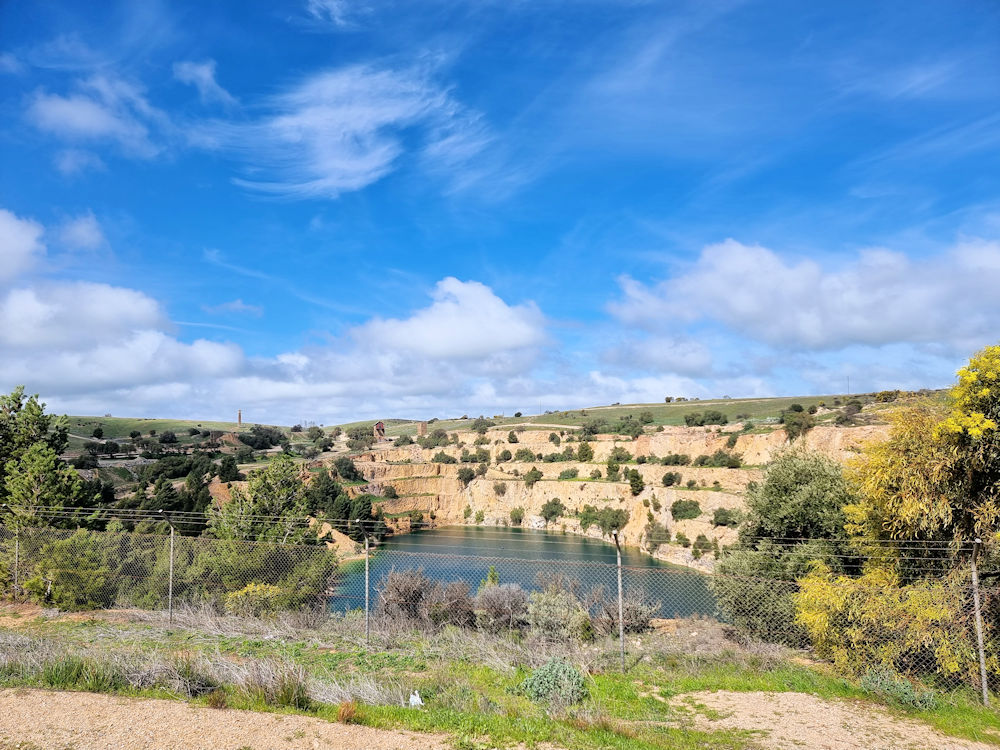Burra South Australia
Burra, South Australia located about 160 kilometres north of Adelaide, is one of the state’s most historically significant towns. Set in the rolling hills and open landscapes of the Mid North, it is best known as the site of one of the world’s great 19th-century copper mining ventures. The town preserves an extraordinary wealth of heritage buildings, ruins, and cultural traditions that together tell the story of a community shaped by mining, migration, and resilience. Today, Burra is recognised as a State Heritage Area and is a popular destination for visitors interested in industrial heritage, colonial history, and rural landscapes.
Origins and the Copper Boom
Burra’s history began in 1845 with the discovery of copper ore in the area. The find sparked one of the earliest and most significant mining booms in Australia, and within a few years the “Burra Burra Mine”—nicknamed the “Monster Mine”—was among the world’s largest copper producers. At its peak, it supplied around five percent of the world’s copper playing a vital role in South Australia’s economy.
The town grew rapidly as miners and their families arrived from overseas. Many came from Cornwall, bringing mining expertise and cultural traditions. Others arrived from Scotland, Wales, and Germany, creating a cosmopolitan community. By the 1850s, Burra was the largest inland town in Australia, with a population of around 5,000.
Town Development and Settlements
Unlike many mining centres, Burra developed as a patchwork of villages, each with its own character and origins. These included Redruth, Aberdeen, Llwchwr, Kooringa, and Hampton, among others. The divisions often reflected cultural origins with Cornish miners living in one area and Welsh in another. This gave the town a distinctive multi-village structure.
The Burra Burra Mine and its owners, the South Australian Mining Association, had a profound influence on the town’s development. Workers’ housing, infrastructure, and public institutions were provided or shaped by the company, while churches, schools, and sporting clubs flourished within the village communities.
Decline of the Mines
The prosperity of the Burra Mine was not permanent. By the 1870s, much of the easily accessible ore had been exhausted, and overseas copper competition undermined the town’s fortunes. Mining ceased for a time and many families left, moving to the newly established copper fields at Moonta and Kadina.
Burra entered a long period of decline, with smaller-scale mining continuing intermittently into the 20th century. Yet unlike some mining towns that were completely abandoned, Burra survived as a regional service centre, and its historic buildings remained remarkably intact.
Heritage and Preservation
One of Burra’s most distinctive features is the survival of its 19th-century mining landscape. Today, the town and its surroundings form the Burra State Heritage Area, recognised for its outstanding industrial archaeology and historic character.
Key sites include:
- Burra Mine (Monster Mine) – The heart of Burra’s mining story, with open-cut pits, engine house ruins, and preserved machinery.
- Redruth Gaol – Built in 1856, it was South Australia’s first country prison and later served as a girls’ reformatory.
- Hampton Village – A row of miners’ cottages now in ruin, offering insight into domestic life during the boom years.
- Unicorn Brewery Cellars – Extensive underground storage tunnels from the late 19th century, later repurposed for various uses.
- Bon Accord Mine Museum – Preserving the story of one of the town’s smaller mining enterprises.
- Market Square and main street – Home to grand 19th-century civic and commercial buildings.
Together, these sites create a unique heritage landscape where industrial, domestic, and civic life are preserved in remarkable detail.
Cultural Influences
Burra’s cultural heritage reflects its migrant origins. Cornish traditions were especially influential, shaping the town’s religious, social, and culinary life.
Welsh and Scottish migrants contributed their own customs, particularly through music, choirs, and Presbyterian traditions. German settlers added further diversity, bringing agricultural skills that shaped the surrounding farmlands. This multicultural character gave Burra a rich community life that remains visible today.
Burra Today
In the present day, Burra is a thriving rural town with a population of around 1,000. Agriculture is the mainstay of the economy, but tourism has become increasingly important. Visitors are drawn to the town’s authentic heritage, open landscapes, and welcoming atmosphere.
The Burra Heritage Passport is a popular way to explore the town. It grants access to key heritage sites, with a key and guidebook allowing visitors to wander through gaols, cottages, tunnels, and museums at their own pace. This self-guided approach enhances the sense of discovery and connection with the past.
Burra Heritage Passport
Available at the Burra Visitor Centre, the Burra Heritage Pass is an excellent way to explore the town’s history. Not only does it provide a list and map of locations and buildings to visit, but has a key to allow access to sites otherwise not accessible. Read the full blog here.
Bon Accord Mine Museum

The Bon Accord Mine Museum in Burra, South Australia, is a heritage attraction that offers visitors a window into the working and social life of one of the town’s historic mining sites. While the nearby Burra Mine is better known, the Bon Accord site preserves a smaller but equally important chapter in the region’s rich copper-mining history. Through its collection of buildings, machinery, and interpretive displays, the museum provides insight into how mining shaped the community of Burra and the daily realities of the men, women, and children who lived there. Read the full blog here.
Burra Mine

The Burra Mine, often referred to as the “Monster Mine,” is one of the most important historic mining sites in Australia. Situated at Burra in South Australia, it was once among the largest copper mines in the world and played a vital role in the economic survival of the fledgling colony of South Australia. Between the mid-1840s and the 1870s, the mine drew thousands of workers—many of them skilled Cornish miners—and transformed Burra into a thriving industrial hub. Today, the remains of the mine, from its open cut to its stone engine houses and surrounding heritage landscape, form part of the Burra State Heritage Area and attracts visitors eager to explore its legacy. Read the full blog here.
Hampton Village

Hampton Village is one of the many heritage sites in Burra, South Australia. Once a bustling settlement of Cornish miners and their families, today it lies in ruin with its rows of bluestone cottages reduced to roofless shells. Read the full blog here.
Redruth Gaol

Redruth Gaol, located in Burra, South Australia, is a reminder of the state’s colonial past and the evolution of law, order, and social welfare in the 19th and early 20th centuries. Built in 1856, it holds the distinction of being the first prison constructed outside of Adelaide. Today, the gaol stands as both a heritage landmark and a museum, drawing visitors who are fascinated by its stark architecture, its history of confinement, and its later use as a girls’ reformatory. Read the full blog here.
Unicorn Brewery Cellars

Among the many heritage treasures of Burra, South Australia, the Unicorn Brewery Cellars stand out as a striking reminder of the town’s industrial diversity beyond copper mining. Built in the 1870s, these underground cellars were part of the Unicorn Brewery complex, which once supplied beer to the booming mining population of Burra and surrounding districts. Though the brewery itself ceased operations long ago, its stone cellars survive in remarkable condition. Today, preserved as part of the Burra Heritage Passport, they offer visitors a fascinating glimpse into colonial brewing, storage, and the social culture of a mining town. Read the full blog here.
Miners’ Dugouts

The Miners’ Dugouts in Burra, South Australia, are among the most remarkable reminders of early mining life in Australia. Nestled along the banks of the Burra Creek, these simple homes once sheltered hundreds of miners and their families during the mid-19th century copper boom. Life here was tough, yet the dugouts remain a powerful symbol of resilience, community, and the hardships faced by those who helped build South Australia’s mining heritage. Read the full blog here.
Other Sites Around Burra








Leave a Reply